Friday Flyer - September 26, 2025
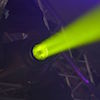
Spotlight on Autumn 2025...A Look Ahead
As of this past Monday, 18:19 UTC...it's Fall! Autumn! So what is coming up in QuarkNet world?
Of course, school has started, and QuarkNet teachers are back in the classroom. It is a great time to start students thinking about how to see data, make indirect measurements, and get a taste of new and exciting physics. We can do that with Data Activities like Mass of U.S. Pennies, Shuffling the Particle Deck, and Rolling with Rutherford. Or you may have another Data Actvities Portfolio must-do to start the school year.
Dark Matter Day is coming right along with Halloween. DM Day celebrations are held in many places at the end of October and into November. You can go to the website to find an event near you or - even better - register an event that you and colleagues create where you are. All you need is some dark matter (don't worry, it is all around, and you do not need to detect it) or, if you cannot find any (you can't), interest in the same.
As you can see from the calendar items below, November brings International Cosmic Day (ICD) and World Wide Data Day (W2D2). Both can be done from your classroom but connect you and your students to a worldwide project. In ICD, you measure cosmic rays—even if you do not have a detector—and compare results. For W2D2, we have Large Hadron Collider data that can be analyzed by students with very little ramp-up and shared with physicists and other students from everywhere. Registrations for both ICD and W2D2 are open even as you read this.
A few other fall favorites are on the agenda as well. Soon, we will ramp up for International Masterclasses (IMC). Look for information in upcoming Friday Flyers and check your email for IMC circulars. And mentors, look for an expedited RFP process just over the autumnal horizon.
What else? Yes! We will have the Friday Flyer, which will appear (mostly) every other Friday into December and beyond!
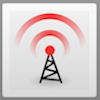
News from QuarkNet Central
World Wide Data Day (W2D2): Registration is now OPEN for W2D2! Students may start to analyze data at any time and record their results: more at: cern.ch/w2d2. The Worldwide Google Sheet will be ready by early October and the big day is November 20.
Center mentors and lead teachers: Please work together to ensure that your center has submitted your Annual Report by October 1. (That's next week.) If you have questions, please contact a QuarkNet staff member.
Sanford Underground Research Facility (SURF) Education & Outreach opening: Our friends at SURF's Education & Outreach Department have an opening for a Science Education Specialist. See this posting for more information about this position, including how to apply.
Update on the Cosmic Ray e-Lab: Our development team continues to actively work to resolve the upload issue in the Cosmic Ray e-Lab and to restore CIMA for CMS masterclasses. We will continue to share progress updates with users through future emails and Friday Flyers.
For the Calendar:
- International Cosmic Day 2025: The 14th International Cosmic Day will take place on November 13, 2025. Click here for more information, including how to register.
- World Wide Data Day (W2D2) is set for November 20, 2025. Registration is open until November 10.
- AAPT Winter Meeting 2026: The AAPT WM 2026 will be held January 17-19 in Las Vegas. The deadline for Early Bird Registration is November 14.
- International Masterclasses 2026: Fermilab-based International Masterclasses will be held March 1-28, 2026. Stay tuned to upcoming Friday Flyers for future updates.
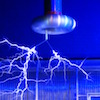
Physics Experiment Roundup
So what's up at CERN? Well, CERN Bulletin reports that the LHC has had recent ups and downs. This does not stop the discoveries: The LHC made oxygen-oxygen and neon-neon collisions this summer and revealed, among other things, that neon atoms have a funny shape. In Interactions, we find that the BASE experiment has produced—get this—an antimatter qubit.
Elsewhere, we find that the cavern for the new Hyper-Kamionkande neutrino detector in Gifu Prefecture, Japan is complete, according to Interactions. We also find from APS Physics that the ANAIS-112 experiment in Spain and COSINE-100 experiment in South Korea contradict earlier results by DAMA experiments at the Gran Sasso that suggested detection of dark matter. So we are still looking!
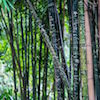
Resources
Do neutrinos and black holes go together? You may recall that IceCube and KM3NeT discovered super-high energy neutrinos in the 1017 GeV range. Physicists are now looking at primordial black holes as a possible source. These little singularities should have been produced from asymmetries in the big bang, bled mass over time due to Hawking radiation, and then...pop! The small, nearly depleted back holes can burst and create high energy particles. APS Physics reports that this is the new suspect for those high energy neutrinos. And, by the way, the James Webb Space Telescope may have found first evidence of actual primordial black holes. Credit Science Alert for that one.
We have more on neutrino physics with videos from Fermilab. Karolina Wresilo introduces DUNE in less than three minutes. And Kirsty Duffy gives a treatment of SBND in one of her signature Even Bananas videos. Any questions?
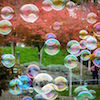
Just for Fun
It's about time we introduced Notre Dame Chemistry professor Kate Biberdorf, know to the world as Kate the Chemist. Here's Kate talking new elements with Neil DeGrasse Tyson and this is what she did last Christmas.
And, in case you are hungry, here is xkcd on pizza.
QuarkNet Staff
Mark Adams: markadams74@gmail.com
Ken Cecire: kcecire@nd.edu
Spencer Pasero: spasero@fnal.gov
Shane Wood: swood5@nd.edu
